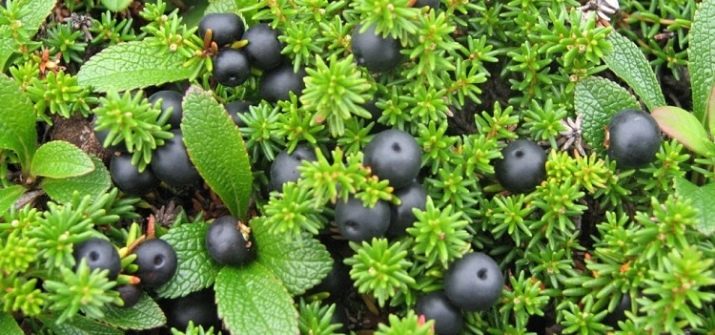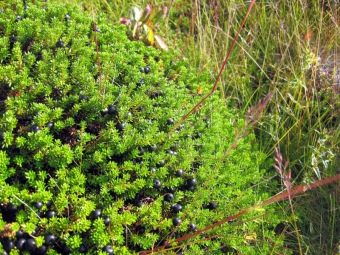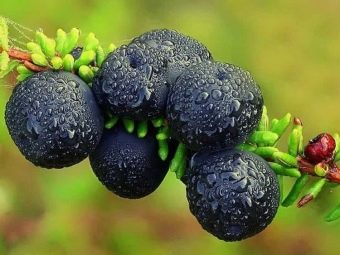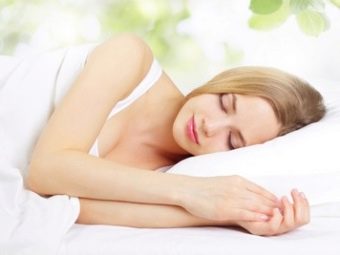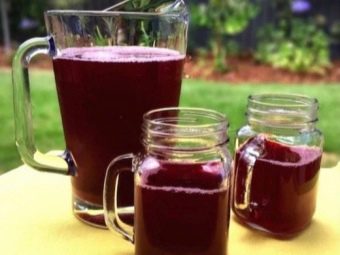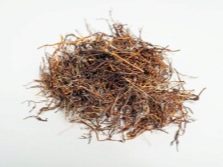Shiksha: description of berries and application
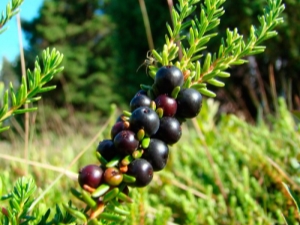
The variety of types of berry bushes in Russia is quite extensive. Each such plant is characterized by its taste characteristics and is used for different purposes.A prominent representative of the berry family is siksha, which is also called Vodanik, Voronik, purple, swamp, sheptun-grass, etc. This culture has a medicinal purpose and is characterized by special properties.
What it is?
Shiksha is a small shrub that has a creeping appearance and is considered evergreen. In height, the plant can reach thirty centimeters. The stem of a Siberian siksha is brownish, densely lined, and often reaches one meter in length.
The description of the plant is as follows: the crowberry is a shrub that branches extensively near the base. Each newly formed shoot has a coating in the form of hairs and sessile glands. Shiksha branches are similar to spruce ones by the presence of short needles.
The flowering of this berry shrub is due to single small three-petal flowers, which are painted in bright pink, sometimes reddish color. During this period, the culture looks very beautiful. The fruits of the crowberries are black berries. They are characterized by a round shape, the presence of a patina of gray color, the diameter of the fruit is 0.5 cm. The skin of the berries is dense, in the inner part there are stones in the amount of from seven to nine.
Shiksha fruits taste sour, but they are quite juicy and have practically no flesh. In the autumn, you can see how crows bushes literally showered with fruits. The ripening process usually occurs in August, but the black berries can be on the siksha until the frosty period.
This representative berry bushes refers to the cold-loving. It can be found in the Siberian part of our country, as well as in the Altai Mountains, in Scotland, Scandinavia, it grows in Northern Europe. Usually settles the flora in swampy areas, prefers moist forest with coniferous trees, tundra and sandy areas. A feature of this plant is considered symbiosis with the fungus. The latter prefers to settle in the roots of Shiksha and supply it with photosynthesis products.
Plant properties
Shiksha is a valuable product for food and medicine. Its unique properties are provided by the presence of the following components:
- essential oils;
- carbohydrates;
- tannins;
- saponins;
- triterpene coumarins;
- flavonoids;
- wax;
- fixed oils;
- vitamins.
Useful elements and vitamins cause a strengthening effect in relation to the human body. This plant has a good effect against seizures, which is an important tool in the treatment of epilepsy. The therapeutic properties of shiksha are used to eliminate nervous system disorders, stress, nervous exhaustion, sleep disturbances, and chronic fatigue syndromes.
Voronik provides the excretion of radionuclides from the body. In addition, the berry has the following properties:
- diuretic;
- soothing;
- hypotensive;
- choleretic;
- phytoncide.
Use weeds
The berry of this culture is edible, it can be used in different ways. Fruits of crowberry are used for making jam, marmalade and a variety of tinctures. Berries can be used in frozen and roasted form. Crowberry is also an excellent natural base for creating dyes.
Particularly popular are siksha blanks, which are subsequently used for therapeutic purposes. For this, it is customary to use not only the fruits of the crow, but also branches with foliage.
Shiksha is a herb with unique properties, thanks to which it has been used for centuries to relieve and heal various kinds of ailments. People who are engaged in herbs study its healing properties, and admirers of traditional medicine use shiksha to relieve fatigue, swelling, eliminate problems with urine emission, metabolic processes in the body, and convulsive manifestations. With the help of shiksha, they struggle with problems of the stomach, intestines, sleep disorders, pressure, and headaches.
Broth shiksha used for rinsing hair, it stimulates their growth and strengthening. In Tibet, people were cured of anthrax, epilepsy, schizophrenia, kidney and neuropsychiatomy with the help of a crowner. Preparations for external use, which include this plant, treat acne, wounds and ulcers that do not heal well. Compresses, lotions are used for external use, and for internal use they make decoctions, infuse grass and prepare juices from fruits.
Consider the main options for the application of shiksha.
- During migraine and to restore the nervous system, it is necessary to use three tablespoons of cones, 5 times a day. To prepare the medicine, it is necessary to pour two tablespoons of herbs with boiling water (0.5 l) and continue boiling for eight minutes, and the fire should be weak. Then the broth must be removed from the heat and wrap, and then insist about an hour. The drug is filtered and taken as intended.
- In case of diseases of the organs of vision, complex glaucoma, cataracts, dry eye syndrome, which can occur with constant work on the computer, it is possible to prepare a shiksha-based tool for instillation of eyes. In order to prepare the medicine, it is necessary to pour one tablespoon of herbs with two tablespoons of boiled water. Grass needs to be steamed, squeezed and filtered. This broth bury eyes (1-2 drops) several times a day.
- If there is a manic-depressive cider that has arisen on the basis of alcohol or drug abuse, then it is recommended to take siksha tincture. The drug is prepared as follows: four spoons of grass is poured with a liter of whey, brought to a boil, poured into a thermos and insist until the morning.
- To combat overwork, fatigue, insomnia, you need to prepare the following decoction. One tablespoon of herbs is poured with 0.5 liters of hot water and simmered for 8 minutes. The medicine is taken six times a day, one sip. When the product is finished, hot water is poured into the remaining herbal sediment and brought to a boil. This use of the plant continues until shiksha becomes discolored.
- If you have problems with the kidneys will help such a decoction of a medicinal plant. Three tablespoons of finely chopped herbs are poured with a liter of liquid and brought to a boil. The drug cools down, infused, filtered and taken one mug each morning.
- To get rid of epileptic seizures, you can use the following recipes.
- 60 Voroniki berries pour a glass of boiling water, then place the tool in a water bath for thirty minutes. Then the dishes with broth wrapped and infused overnight. An adult is recommended to take at least a tablespoon of medicine six times a day, and for children the recommended dose is two times less.
- Healing drug can be prepared from ten grams of plants, which are poured boiling water and put in a water bath for twenty minutes. After the drug has cooled, it is filtered and taken half a cup three times a day. This drug is also used for prophylaxis with courses of 30 days 4 times a year.
Before you start using drugs that have shiksha, you need to get medical advice. It is contraindicated to apply these decoctions during pregnancy, breastfeeding and allergic reactions to plant components.
Reviews of people who have tried such infusions and decoctions, suggest that the use of shiksha for the purpose of healing from diseases and failures in the body, is quite effective. The properties of the therapeutic nature of the plant are checked not only by time, but also by many of our compatriots. A large number of positive reviews associated with the treatment of epilepsy and problems with the nervous system.
How to store a crow?
When flowering shiksha is harvested, cutting off the entire green part of the plant.Berries gather only after their full ripening. In order to store the medicinal plant, the grass must be expanded in a small layer. At the same time the room should be well ventilated. Shiksha need to be mixed periodically. Save the plant for the winter and can be using freezing.
Keep the crow must be in a cool place, away from direct sunlight. For this purpose it is worth using paper or cotton bags. Berries can be dried in a natural way, as well as with the use of an electric dryer or oven. If all conditions of harvesting and storing shiksha are met, then it can be used for two years.
For what siksa is, see the next video.

